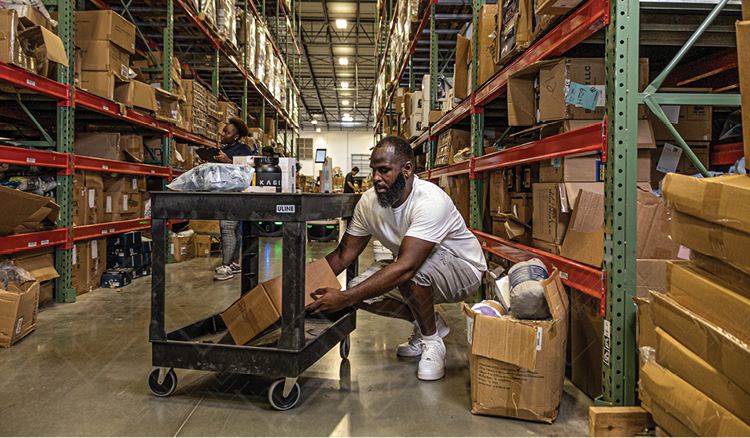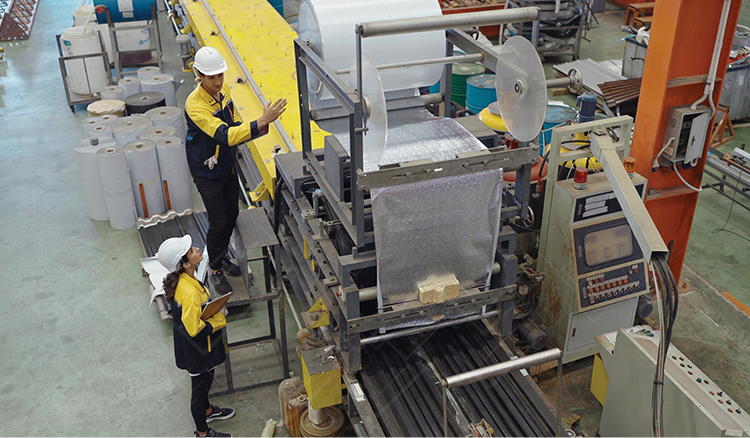What’s the ROI of a Labor Pool? Is it Worth it?
You’ve heard the term labor pool and have an idea of what it is, but now you are likely wondering: what level of commitment is needed, and is it worth it for me and my business?
Operations leaders across the country are wrestling with the issue of balancing their daily execution with finding time to drive operational improvements. The truth is that creating a labor pool is something we’ve seen plenty of clients utilize to solve this problem. The other truth is that creating a labor pool is a bonafide change to the way that most businesses have viewed their labor force, which is understandably a reason to be skeptical.
At Veryable, we operate an on-demand labor platform to solve the need for efficiently responding to changes in customer demand. We understand that this isn’t for everyone, but by the end of this blog you will be better equipped to make that determination for your business.
The big question is: should building a labor pool be an operational improvement priority?
In this article, we will discuss these questions and the initial upfront investment required to build the labor pool.
What level of commitment does a labor pool take?

To build a labor pool, you will need to commit to the process for a period of about 6 weeks. This is the time you’ll need to initially filter the local operator pool and to establish credibility for your business in the marketplace.
To calculate the ROI of a labor pool, you’ll need to establish a cost for the initial investment and a dollar figure for the expected benefit. Below, we will identify the factors of each and walk through how to determine the ROI and better answer the question of where this initiative should be prioritized for your business.
To help visualize the commitment required to build a labor pool, let’s set the stage with an example scenario. We will assume that your business needs to build a labor pool of 30 people to be part of the flexible, external workforce. We will also factor in the poor attendance for the first few ops that businesses experience and the lower success rate seen during the initial labor pool filtering process. This market friction is something every new business encounters, and it will diminish as your business continues to establish credibility on the marketplace.
To make building a labor pool go as quickly and efficiently as possible, we recommend posting ops on a daily basis as highlighted in the below table. This posting strategy puts your business out on the marketplace frequently to help establish credibility and creates multiple opportunities to filter the local labor pool.

This example scenario accepts the fact that people will be people and includes less than stellar attendance for the first two weeks and average attendance for the next three. The excellent attendance starts to come in the sixth and final week of the labor pool build, once your business is nearly complete building its labor pool. Maintaining a marketplace presence will be key to sustaining the success as this maintains your business’ credibility with the local labor market.
So, what’s the cost of a labor pool?
When utilizing on-demand labor, you will only have to pay for the time worked. If people do not show up, then they are not paid. Likewise, if they are asked to leave early, then they will only be compensated for the actual time spent on the floor.
The daily average of on-demand labor on the floor is four people for our example scenario, so the initial investment to build the labor pool up to 30 people over 6 weeks is ~$11k. The initial investment of $11k is what’s deployed to filter through operators through one-day 8 hour work opportunities over the six weeks. This is completed through the strategy of posting daily ops for four people, then favoriting the good workers and not inviting the poor performers back. Also, since we’re grounded in reality, the labor pool build also incorporates people not showing up at their scheduled times.
During this time, your business is getting productivity from the people on the floor as they become familiar with your operation, so this is not money thrown out the door. Baseline assumptions are a pay rate of $12.50 / hour, that you’re posting daily for every business day, and that you’re seeing increased attendance tracking as your business establishes credibility.
Over the year, the labor pool will require maintenance as it’s a perishable asset, and this means cycling new operators into the facility on a regular basis. From our experience, a reasonable cadence is to bring in a new person a week for this size labor pool. On a weekly basis, this will put approximately a hundred dollars per person at risk if the person does not work out for your business. This would annualize to ~$5,000 to keep your labor pool ready and available.
In total, the year 1 costs for a labor pool will be ~$16k for a 30 person labor pool. The costs are the initial $11k labor pool filtering and then the $5k to keep your labor pool full and maintain marketplace credibility.
What’s the value of a labor pool?
The second piece required for an ROI number is to calculate the value. You can read more about labor pool benefits, but we will stick to overtime reduction and cost per unit reduction as the two benefits for this discussion.
The ability of on-demand labor to maintain short lead times and increase customer satisfaction creates revenue earning opportunities for all businesses, and this is the biggest value lever for having a labor pool. For simplicity, overtime and cost per unit give us tangible numbers to inform our calculation.
Overtime Savings
Instead of mandating overtime out of the full-time workforce, you will have the option to have your labor pool work these hours. From what we’ve seen on the platform, an overtime reduction from 9% to 6% for a workforce of 50 creates the potential savings of ~$40k using the same assumptions. This is a significant reduction and likely means a return to the black or a significant increase in profitability, and these types of results are a middle of the road outcome for the businesses on the platform.
Cost per Unit
Driving down the cost per unit becomes a strategic play to grow market share, and this is enabled by the labor pool. By aligning your full-time workforce to cover your base level demand, the labor pool can then flex into and out of the business as needed.
Aligning your labor to demand significantly reduces wasted labor capacity and keeps productivity costs high. Over the course of a year, a business producing 50,000 units initially at $0.50 per unit will save at least 3% on production costs by tracking labor more efficiently to demand. Businesses with ready labor pools generate these savings through shipping orders on-time, unloading inbounds quickly, and maintaining low lead times.
What’s the ROI of a labor pool?
Now we're ready to calculate the ROI.
Cost
Initial Filtering Cost
$11,000
Ongoing Annual Cost (50 weeks)
$5,000
Totals
$16,000
Return
Overtime Savings
$40,000
Cost per Unit reduction
$65,000
Totals
$105,000
ROI
6.5x
The 6.5x return on investment should grab the attention of any ops leader to look further into the benefits of on-demand labor. Integrating on-demand labor into your operation does require commitment to change, but the results of a flexible workforce will make the effort worthwhile. A dynamically scheduled segment of your workforce will give your business the edge it needs to grow.
These labor pool results aren’t hypothetical
Veryable has generated substantial savings for ShineOn, reducing yearly overtime costs by nearly $300,000.
Previous Posts
How Policy Constraints, Not Just Production Bottlenecks, Threaten Your Bottom Line
The Future of Manufacturing and Logistics
Create a free business profile today to explore our platform.






